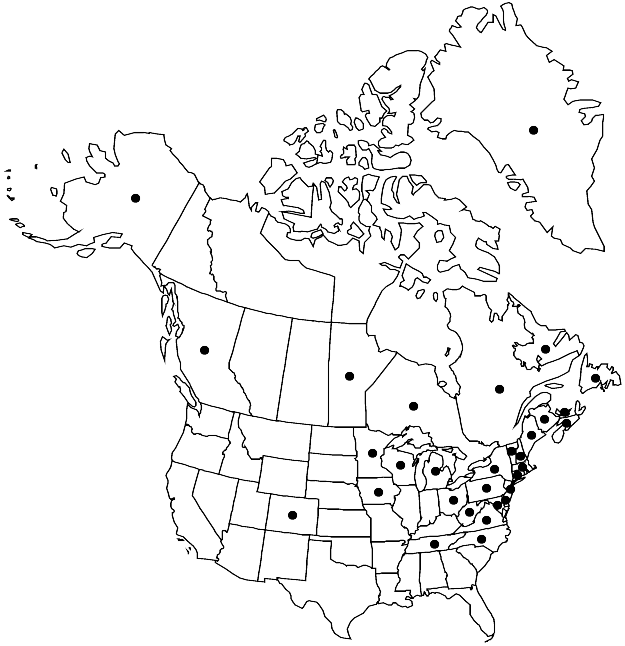Sciuro-hypnum populeum
Arctoa 11: 270. 2003.
Plants small to medium-sized, in dense or loose tufts, green, yellowish green, or brownish yellow. Stems to 5 cm, creeping, straight to slightly flexuose, densely foliate, irregularly pinnate, branches to 7 mm, straight to slightly curved, terete-foliate. Stem leaves erect-appressed to erect, closely imbricate, ovate-lanceolate, straight, weakly concave, not or indistinctly plicate, 1.2–1.9 × 0.4–0.6 mm; base moderately broad-decurrent; margins plane or recurved in places (more commonly proximally), serrulate to subentire; apex gradually tapered, short-acuminate; costa to 80–100% leaf length, moderately strong, terminal spine sometimes present; alar cells similar to juxtacostal cells; laminal cells elongate or sometimes rhomboidal, 25–80 × 5–8 µm; basal cells subquadrate to quadrate, relatively small, region in 5 rows, opaque across base. Branch leaves with abaxial costa surface somewhat serrate. Sexual condition autoicous. Seta reddish, 0.8–1.5 cm, rough, sometimes slightly so. Capsule slightly to moderately inclined, reddish, ovate, slightly curved dorsally, 1–2 mm. Spores 12–16 µm.
Habitat: Rock, granitic boulders, limestone, concrete, base and trunks of deciduous trees, soil, exposed or moderately shaded, dry habitats
Elevation: low to high elevations (10-2000 m)
Distribution

Greenland, B.C., Man., N.B., Nfld. and Labr., N.S., Ont., P.E.I., Que., Alaska, Colo., Conn., Del., Iowa, Maine, Md., Mass., Mich., Minn., N.H., N.J., N.Y., N.C., Ohio, Pa., Tenn., Vt., Va., W.Va., Wis., Europe, Asia, Atlantic Islands.
Discussion
Sciuro-hypnum populeum is usually a lowland species, and the only exception is the population in Colorado at 2000 m (Boulder County, Bear Mt., W. A. Weber & R. C. Wittmann B-112127, COLO). H. A. Crum and L. E. Anderson (1981) noticed that, unlike in Europe, this species does not grow on tree trunks in North America, although it has occasionally been collected on tree bases in forests. Sciuro-hypnum populeum can be recognized by its combination of percurrent costa with opaque basal cells, unique among North American Brachytheciaceae. Sometimes it has been confused with Homalothecium species with costae masked by their characteristic laminal plications, and appearing percurrent. Brachythecium acuminatum and S. plumosum are similar to S. populeum in having short and more or less uniform cells across the leaf base, but the costa in these species disappears well below the apex. Sciuro-hypnum populeum may develop rather broad stem leaves with bigger basal cells in relatively wet conditions, as has S. reflexum. However, the more gradual tapering of the leaves is diagnostic.
Selected References
None.